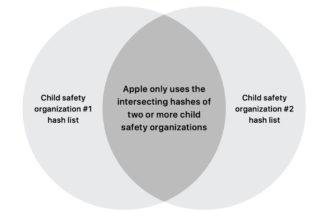:no_upscale()/cdn.vox-cdn.com/uploads/chorus_asset/file/24223354/226386_Jackson_Gibbs_Ragebait_Chefs_TikTok.gif)
Eli Betchik has always had a stomach of steel, but it wasn’t until they went to art school that they realized it could make them famous.
“I was perfectly willing to eat random things for the entertainment of my friends. I would take a ketchup packet from the diner and suck it up or eat an entire block of Parmesan cheese,” remembers Betchik, now 23, who makes and sells jewelry from their basement in Ohio. “The more I did that, the more I started realizing I could do this on the internet. I thought that I would be able to entertain people.”
In November 2020, the nonbinary jewelry maker was at art school in Cleveland, where they’d made friends with a group of performance artists. Soon, Betchik’s food performances became their own kind of art — particularly once they started putting the act on TikTok.
“I get compared to a car crash or a train wreck a lot, where people can’t look away.”
Their first few posts — things like fried mayonnaise, ramen noodles stewed in chocolate milk or cookie-and-milk-based slop warmed in the microwave, all consumed on camera — were sent out to a small circle of friends. A month later, clips of Betchik eating bologna glazed in Jolly Rancher-based syrup and instant hot chocolate brewed in hot dog water began to pick up thousands of views from people outside of their social circle. They scored their first truly viral video in 2021 after they created “cheesy mashed potatoes” from Lay’s chips boiled in water and rice wine vinegar. The clip was watched more than a million times, generating a string of copycats and press coverage that ranged from fawning to horrified.
Betchik, it seemed, was on to something. People were horrified but captivated. The more outrage they caused, the more their following grew. Their account, @elis_kitchen — which carries the official tagline “the most evil chef on TikTok” — has drawn more than 100,000 followers since launch.
“It’s just a lot of disgust, really — disgusted fascination,” says Betchik. “I get compared to a car crash or a train wreck a lot, where people can’t look away, which I enjoy hearing very much.”
In the comments, the most common question is whether Betchik is doing all this just for attention. “I am,” Betchik confirms. “I try to take time out of my day to reply [to the commenters] and say, ‘Yes. Yes, I am.’”
Betchik is one of TikTok’s premiere rage-bait chefs: influencers who make videos of gruesome and often disgusting recipes, which they then consume in front of a camera. Most creators in the space claim to be driven by curiosity rather than fame, but their reliance on outrage to fuel their online presence is undeniable. On TikTok and other platforms, algorithms favor engagement — and nothing inspired engagement quite as reliably as disgust.
Like a nightmare version of the Food Network, the rage-bait chef genre is both distinctive and diverse. Some members — like @joshandlisa, who produced the countertop mac-and-cheese video, and @mchausfun, the TikToker who made a banana-filled pastry with a catheter-like tool — are clearly prank channels and label themselves as satire on platforms outside of TikTok. Others like Sylvia Ferreira and The Shaba Kitchen (who brought terrifying chicken lollipops and strawberry and chocolate cream cheese spaghetti to TikTok) seem to be trying their best to make innovative food, even if the results can be alarming. There are, of course, conspiracy theories: one TikToker recently went viral with claims that creators like Ferreira are secretly making fetish content, backed up with a clip of Ferreria cooking a vagina-shaped chicken breast. (Ferreira and The Shaba Kitchen did not respond to The Verge’s requests for interview.)
Some members of the niche insist that their culinary intentions are pure. “On the internet, you start to see all these crazy cooking channels and recipes, and you think, what would it be like to make this? So, I was really interested in trying them out and seeing for myself,” explains Jane Brain, a 27-year-old tech worker and rage-bait chef from Ontario, Canada, with over 200,000 followers on her TikTok account, @myjanebrain. (Brain asked The Verge to withhold her real last name for privacy reasons.)
Brain’s most viral videos include ramen noodle lasagna and a chicken baked in a pumpkin, which was described as “Halloween salmonella” by chef and TikToker Gordon Ramsay. Viewers are often shocked to see that Brain samples her creations at the end of each clip. “I always like to give [the recipes] a try,” continues Brain, who shoots and stars in most of her TikToks with her creative partner and best friend, Emma. “I think it’s only fair to judge for myself.”
Others claim they purposely seek out terrible recipes in an effort to challenge themselves and see if their culinary expertise can improve the end product. Liz and her 30-year-old partner, Zach — who also asked The Verge to withhold their last names for privacy reasons — have more than 50,000 followers on their joint account, @packagedfoodgourment; their most viral videos have included their attempts to recreate the worst-rated mac and cheese on Yummly and the worst-rated French toast on AllRecipies.com.
“Some of [the recipes] are very polarizing,” says Liz, who noted many of the worst-rated recipes online have a mixture of one-star and five-star reviews. “I kind of thought, ‘Where’s the truth? What’s happening here?’ I wanted to see if they were really that bad.”
According to experts, creating content that sparks outrage in viewers makes sense in an attention-based economy. “When we’re scrolling through social media posts, I think there’s something about negativity and pain that might capture our attention better,” explains Steve Rathje, a postdoctoral researcher in psychology at New York University who focuses on social media, political polarization, and misinformation. He has previously published work on the way strong emotions like outrage and hate predict and drive the virality of social media posts.
“Social media might be creating perverse incentives for the creation of polarizing content,” added Rathje, “because this is the kind of content that gets attention online.”
Capturing attention consistently over time is not easy, however, and the art of keeping viewers engaged with each recipe can involve long and arduous work. Betchik has spent as long as five hours threading raisins on to raw spaghetti strands or even days freezing sheets of SpaghettiOs.
They feel they’ve discovered the recipe for viral success: ruining recipes that viewers hold dear to their hearts. “Using foods that people would perhaps associate with their childhoods and really bastardizing those — people will get really upset about that,” explains Betchik. The frozen SpaghettiOs, for example, were used as “bread” in a version of a PB&J sandwich in which jelly was swapped for mayonnaise. The video Betchik made of it has been viewed over two million times. “I try to not make things that I wouldn’t be willing to eat,” adds Betchik, who eats roughly 60 percent of their creations and tries to compost or reuse the rest. “But sometimes I do cross that line.”
Brain is also opposed to food waste — she often takes her successful recipes to friends and family, who now look forward to her video shoots — although it’s no easy task to avoid it. “There have been a few recipes that I’ve definitely struggled with,” she says. In some videos, like her widely mocked pumpkin chicken clip or her one-pan quesadilla, Brain’s expressions appear strained when she tastes the food. “I think viewers can see the look on my face when I bring the fork up to my mouth.”
Such moments seem to bring rage-bait followers great joy. They leave comments expressing their glee about the disastrous food, tag friends and other influencers, or berate and poke fun at the influencers themselves. Zach and Liz listed everything from their Canadian accents to their appearance as reasons that their viewers were outraged. Their comment sections are flooded with vitriol over everything from the cultural hegemony of the American pancake to critiques of their choices in the kitchen. “The idea is to test out the recipe as it is,” says Zach, who is often left frustrated by such attacks. “So they’re kind of missing the point of the video.”
The chefs have even given way to a horrible food economy on TikTok, in which other influencers stitch the videos of rage-bait chefs to attract views of their own. Betchik’s videos have been stitched by TikTokers like @sashaandnate, @ethagoat._, and @chubby_hoochie — creators who have built large followings by reacting to shocking videos, including those of rage-bait chefs. “Those people need someone to react to,” they say.
Experts like Rathje, however, are not convinced the culinary TikTok vibe shift is a good thing. “People stop and pay attention to negative content because it’s kind of like stopping to watch a car crash — you can’t really look away,” he added. “That might be good for influencers to learn, but I think it’s somewhat bad for the world.”
Betchick, meanwhile, doesn’t think that hate-based content is negative as long as its focus is on something like food. “I think that people who are simply viewing my videos are able to find joy in the amount of hatred they feel,” they say. “I might as well provide that service to them.”
It’s a sentiment that Brain can get behind. While she doesn’t see herself as a rage-bait chef — she claims her cooking attempts are in earnest — she has seen firsthand how much content can be produced from a single questionably executed recipe. Tapping into the trend for financial gain, in her eyes, is a smart move — as long as those who dare to cook badly are prepared for the hateful comments.
“If your goal is strictly to make as much money as possible — and if hate and anger is the way to do that — then I can totally see why it makes sense,” says Brain. “To each their own with that one.”









